==================
Affiliate Statement and a Caveat
First off, a little caveat: within my articles you will find affiliate links, meaning if you buy them, I get a small commission. Your cost is not affected. In addition, I am an Amazon Associate and I earn from qualifying purchases on Amazon.
And yes, if I say that I recommend a product here, it means I truly believe it is a good product. I refuse to recommend any product that I have not researched and believe to be a good value.
Even better, I provide you with a very clear picture of the product, it’s use, and the probable value.
Earning your trust is important to me. I run this website myself and the commissions and donations help support the site.
Sound reasonable and fair enough? Let’s continue to the article.
==================
Are you ready to embark on an unforgettable adventure in the great outdoors with your family? Camping can be an enjoyable experience, offering a chance to bond with loved ones while surrounded by nature’s beauty. However, it’s essential to prioritize safety during your camping trip to ensure it remains a memorable and enjoyable experience. In this blog, we’ll delve into the importance of camping safety for families and provide valuable tips for every aspect of your camping adventure.
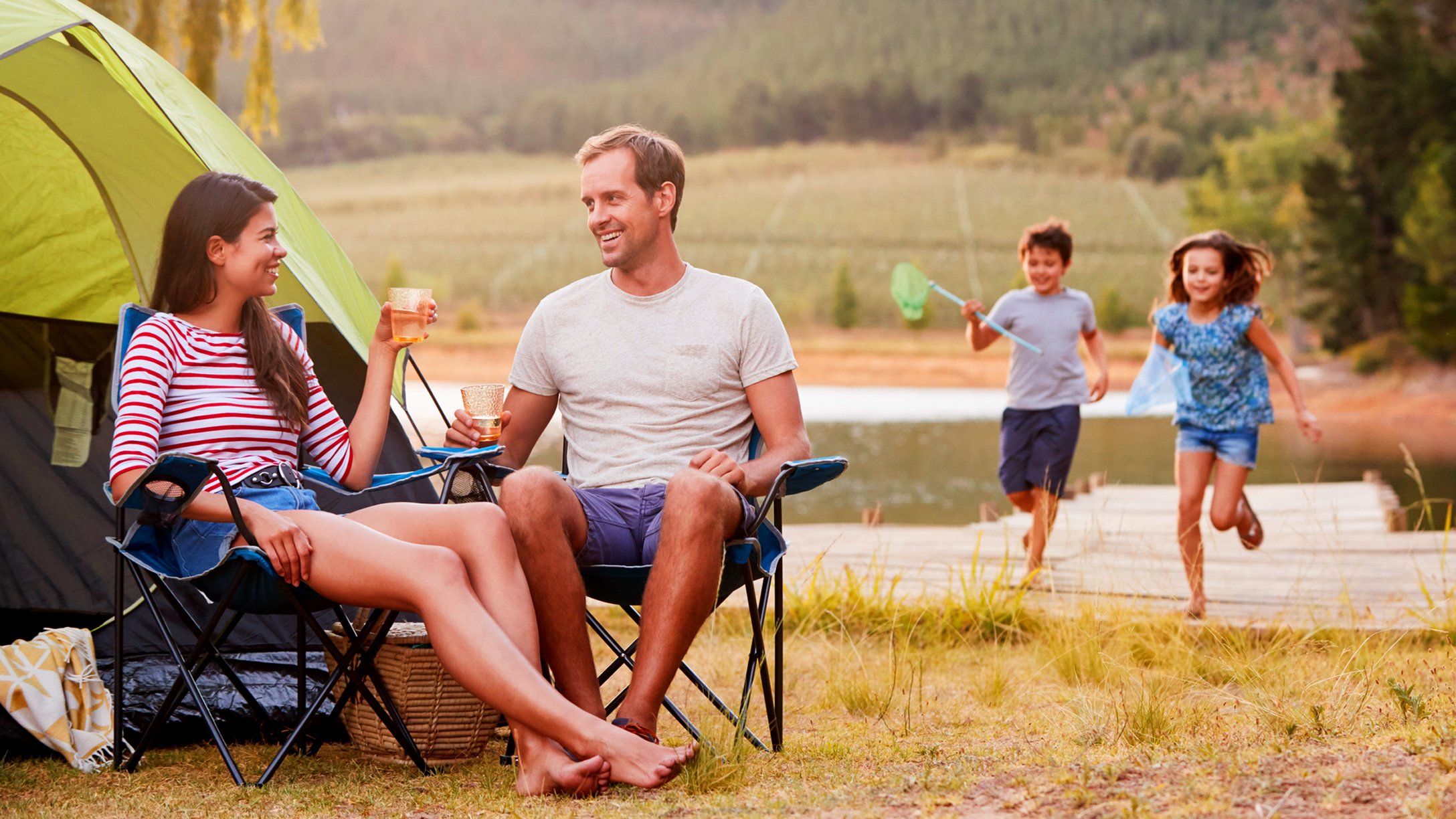
Camping trips are all about making lasting memories. Still, we’ll also discuss the importance of avoiding leaving a fire unattended, packing a comprehensive first aid kit, and the best practices for securely setting up your tent camping site. We’ll explore ways to protect your family from wild animals, share safety tips around the campfire pit, and highlight the importance of food safety, especially when cooking at picnic tables. Additionally, we’ll cover essential aspects like staying hydrated, using insect repellent, and dressing appropriately for various weather conditions.
So, whether you’re a seasoned outdoor enthusiast or new to camping, this blog will equip you with the knowledge and confidence to keep your family safe during your next camping adventure. Let’s embark on this journey together, ensuring that health issues and safety concerns won’t stand between you and the fun camping experiences.
Pre-Trip Preparation
Camping is a fantastic way for families to connect with nature, create lasting memories, and enjoy the outdoors. However, thorough pre-trip preparation is essential to ensure a safe and enjoyable camping experience. Let’s delve into the crucial research and planning aspects and the essentials you must pack for your camping adventure.
Research and Planning
Before embarking on your camping journey, proper research and planning can make all the difference. It helps you choose the right destination, be prepared for weather conditions, and navigate camping regulations and permits.
Destination Selection
Selecting the right camping destination is the foundation of a successful trip. Consider the following factors when choosing your location:
- Accessibility: Ensure that the chosen location is easily accessible, especially if you have young children or individuals with physical limitations.
- Proximity to Home: Depending on the duration of your trip, you prefer a location that’s relatively close to home.
- Natural Features: Research the natural features of the area, such as rivers, lakes, or hiking trails, to tailor your activities accordingly.
- Wildlife Considerations: Learn about the wildlife in the area, including any potential encounters with wild animals like bears or snakes.
- Campground Amenities: Some campgrounds offer picnic tables, nearby restrooms, and separate raw food storage areas.
- Regulations: Familiarize yourself with any camping regulations in the area, such as fire bans, waste disposal rules, and camping site restrictions.
Weather and Season Considerations
Understanding the local weather conditions and the camping season is vital for your safety and comfort. Consider the following:
- Seasonal Variations: Different seasons can drastically change camping conditions. Be aware of temperature fluctuations, rainfall, and snowfall.
- Weather Forecast: Check the weather forecast for your chosen camping dates and pack accordingly. Prepare for unexpected weather changes.
- Extreme Weather: Be prepared for extreme weather events such as storms, lightning, and extreme heat or cold. Plan your shelter and clothing accordingly.
Camping Regulations and Permits
Complying with camping regulations and obtaining the necessary permits is crucial to avoid legal issues and ensure a smooth camping experience. Here are some key points to keep in mind:
- Permit Requirements: Check if you need any permits for your chosen camping location. Some areas may have limited entry and require reservations.
- Camping Fees: The budget for camping fees can vary depending on the campground and amenities provided.
- Campfire Restrictions: Learn about any campfire restrictions, especially during dry seasons or in areas prone to wildfire.
- Wildlife Regulations: Understand wildlife interactions and food storage rules to prevent encounters and protect you and the animals.
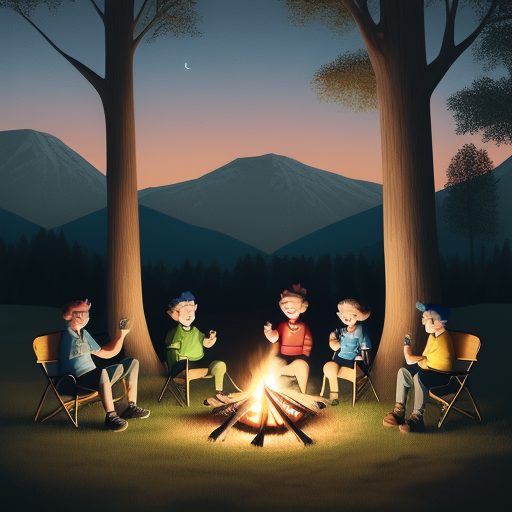
Packing Essentials
Once you’ve chosen your camping destination and grasped the weather and regulations, it’s time to pack your essentials. Properly packing your gear and supplies ensures you have everything for a safe and enjoyable camping trip.
Shelter and Sleeping Gear
Your shelter and sleeping gear are essential for a comfortable night’s rest. Consider these items:
- Tent: Choose a suitable tent based on your family size and weather conditions.
- Sleeping Bags: Ensure everyone has a warm and weather-appropriate sleeping bag.
- Sleeping Pads: Insulated pads provide comfort and insulation from the cold ground.
- Pillows and Blankets: Pack pillows for added comfort and extra blankets for colder nights.
- Repair Kit: Bring a repair kit for quick fixes to your tent or sleeping gear.
Clothing and Footwear
Proper clothing and footwear keep you comfortable and protected from the elements. Include these items:
- Weather-Appropriate Clothing: Pack clothing suitable for the expected weather conditions, including rain gear and warm layers.
- Sturdy Footwear: Choose durable, waterproof footwear with good traction for hiking and outdoor activities.
- Extra Socks and Undergarments: Extra socks and undergarments are essential for staying dry and comfortable.
Food and Cooking Supplies
Food is a significant part of the camping experience, and proper food and cooking supplies are essential:
- Cooler: An insulated cooler keeps perishable food items fresh.
- Camping Stove: Ensure you have a reliable camping stove for cooking meals.
- Cookware and Utensils: Pack pots, pans, utensils, and dishes suitable for camping.
- Food Storage Containers: Use airtight containers to store food and prevent contamination.
- Cooking Tools: Remember essentials like a can opener, cutting board, and kitchen knife.
Navigation Tools
Proper navigation tools help you stay on track during your outdoor adventures:
- Map and Compass: Always carry a map and compass and know how to use them for navigation.
- GPS Device: Consider using a GPS device or smartphone app with GPS capabilities for additional guidance.
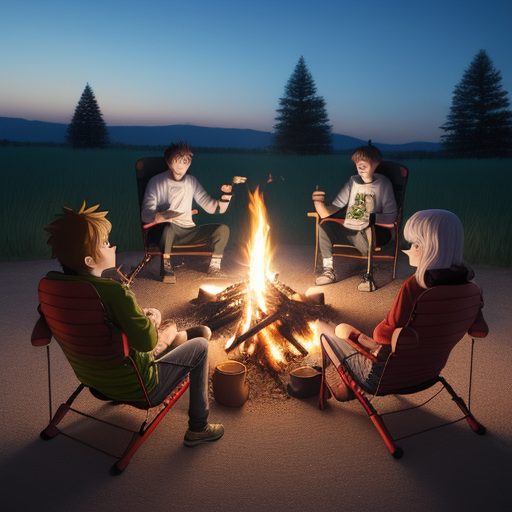
Communication Devices
In case of emergencies or to stay connected, these communication devices can be crucial:
- Cell Phone: Carry a fully charged cell phone with emergency contacts saved.
- Two-Way Radios: Two-way radios are useful for communication within your group, especially in areas with poor cell reception.
- Emergency Locator Beacon: An emergency locator beacon can be a lifesaving tool in remote areas.
Personal Items
Lastly, don’t forget personal items that make your camping experience enjoyable:
- Identification: Carry identification documents, including driver’s licenses, passports, and medical insurance cards.
- Cash: Have some cash on hand for emergencies or purchases in areas without card payment options.
- Entertainment: Bring books, games, or other forms of entertainment for downtime.
Proper pre-trip preparation, including thorough research, planning, and packing, sets the stage for a safe and enjoyable camping adventure. By considering destination factors, weather conditions, camping regulations, and essential gear, you’ll be well-prepared for your family camping trip.
Campsite Safety
Regarding camping, safety should always be a top priority, especially when you’re out in the great outdoors with your family. Ensuring a safe and enjoyable camping trip involves careful planning and adherence to key safety principles. In this section, we will delve into campsite safety, covering essential aspects that will help you create memorable and secure camping experiences for your family.

Choosing a Safe Location
Selecting the right campsite is crucial to ensuring your family’s safety during a camping adventure. Let’s explore the factors to consider when choosing a safe location.
Distance from Water Sources
One of the primary considerations when picking a campsite is its proximity to water sources. While camping near a lake or river can be picturesque, it’s essential to maintain a safe distance from these areas to prevent accidents.
Avoiding Hazardous Terrain
Camping in rugged or hazardous terrain can threaten your family’s safety. Cliffs, unstable rock formations, or areas prone to landslides should be avoided.
Wildlife Considerations
The presence of wildlife is part of the allure of camping, but it can also pose safety challenges. Here, we’ll discuss how to handle wildlife encounters and minimize risks.
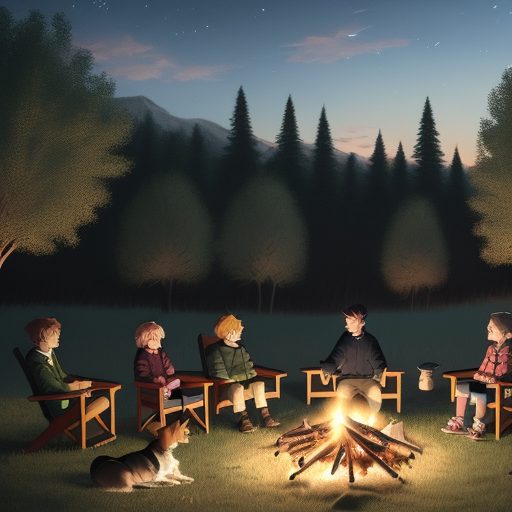
Setting Up Camp
The next step is setting up camp once you’ve chosen a safe location. Properly organizing your camping gear and establishing a secure campsite is vital for safety.
Tents and Shelters
Your choice of shelter significantly ensures your family’s safety and comfort during the camping trip. We’ll explore how to set up tents and shelters effectively.
Campfire Safety
Campfires are a beloved part of camping but can be hazardous if not managed correctly. Learn essential campfire safety tips to keep your family safe.
Food Storage
Proper food storage is essential to prevent wildlife encounters and food contamination. Discover the best practices for storing your food securely.
Camp Hygiene
Maintaining good hygiene while camping is crucial to prevent illnesses and ensure everyone’s well-being. Here, we’ll cover hygiene practices for a safe camping experience.
Waste Disposal
Learn how to dispose of waste properly and minimize your environmental impact while camping.
Hand Sanitation
Keeping your hands clean is essential for preventing the spread of germs. Explore effective hand sanitation methods in a camping environment.
Water Purification
Access to safe drinking water is vital. We’ll discuss water purification techniques to ensure your family stays hydrated and healthy.
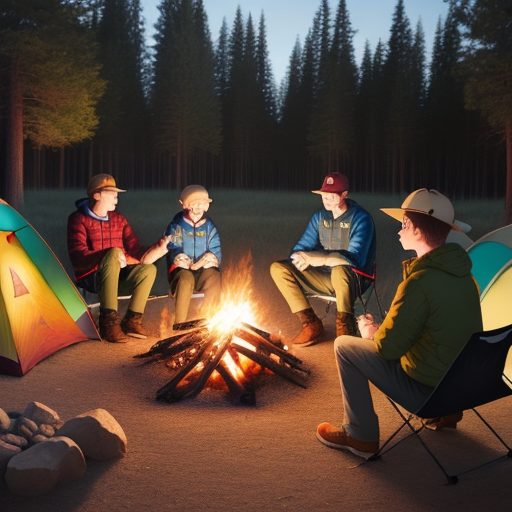
Environmental Responsibility
Being responsible campers means caring for the environment and minimizing your impact. Let’s explore the principles of environmental responsibility while camping.
Leave No Trace Principles
Discover the Leave No Trace principles and how they guide responsible camping practices.
Campfire Restrictions
Understand the importance of adhering to campfire restrictions and alternatives for cooking and warmth.
Responsible Pet Ownership
Being a responsible pet owner is essential if you’re camping with pets. Learn how to ensure your pets’ safety and minimize their environmental impact.
Fire Camping Safety for Families
Camping is a fantastic outdoor activity for families to connect with nature and create lasting memories. However, it also comes with certain risks, especially regarding fire safety. Explore essential tips and precautions to ensure your family’s safety during your camping adventure. We’ll cover campfire safety, camp stove safety, and emergency procedures in case of a fire.
Campfire Safety
Campfires are a quintessential part of the camping experience but can pose significant risks if handled improperly. Let’s explore the key aspects of campfire safety.
Fire Rings and Pits
When setting up a campfire, always utilize designated fire rings or pits provided by the campground, if available. These designated areas are designed to contain the fire safely. If no such facilities are available, create a fire pit by clearing away flammable materials and surrounding it with rocks.
Proper Wood Selection
Choosing the right wood for your campfire is crucial. Use dry, seasoned wood from the campground’s designated firewood area, or bring your own. Avoid using green or freshly cut wood, which can produce excessive smoke and spark.
Fire Extinguishing Methods
Always have the means to extinguish your campfire readily available. Keep a bucket of water, a hose, or a fire extinguisher nearby. Never leave a campfire unattended; ensure it is completely out before leaving or going to sleep.

Camp Stove Safety
Camp stoves are essential for cooking during your camping trip. However, they also require caution to prevent accidents.
Fuel Handling
Handle fuel for camp stoves with care. Use only the type of fuel the manufacturer recommends, and store it in a secure container away from heat and open flames. Always follow the instructions for refilling fuel containers.
Proper Ignition
Ignite camp stoves according to the manufacturer’s instructions. Use long-reach lighters or matches designed for outdoor use. Never attempt to light a camp stove with regular household matches or an open flame.
Safe Cooking Practices
Keep a safe distance from the camp stove while cooking, and use appropriate utensils to prevent burns. Never leave a lit stove unattended; ensure it is turned off when unused.
Fire Bans and Restrictions
Before embarking on your camping adventure, research and familiarize yourself with any fire bans or restrictions in your chosen camping area. Some regions may have strict regulations due to drought or high fire risk. Always respect these rules to protect the environment and your family’s safety.
Emergency Procedures in Case of a Fire
Despite all precautions, accidents can happen. Knowing how to respond in case of a fire is essential.
- Alert Everyone: If a fire starts, immediately alert everyone in your camping party.
- Contact Authorities: Dial emergency services and report the fire’s location and size.
- Evacuate Safely: Evacuate your campsite in an orderly manner, moving upwind and uphill if possible.
- Use Safety Equipment: If available, use fire extinguishers, water buckets, or shovels to control the fire.
- Seek Shelter: If the fire is uncontrollable and moving towards you, seek shelter in an enclosed shelter or a body of water.
- Stay Calm: Keep your family members calm and follow emergency procedures until help arrives.
First Aid and Medical Considerations
Camping is an exhilarating outdoor activity that brings families closer to nature but has inherent risks. Being prepared for unexpected situations and knowing how to administer basic first aid can make all the difference in ensuring a safe and enjoyable camping experience. Let us explore essential first aid kit items, common camping injuries, managing medical conditions during your trip, and creating an emergency evacuation plan.
First Aid Kit Essentials
A well-stocked first aid kit is a camping essential. It’s your first line of defense in treating minor injuries and addressing unforeseen medical issues. Here’s a comprehensive list of first-aid kit essentials to pack for your camping trip:
- Adhesive Bandages are essential for covering minor cuts, scrapes, and blisters.
- Sterile Gauze Pads and Tape: Useful for larger wounds and supporting sprains and strains.
- Antiseptic Wipes or Solution: To clean wounds and prevent infection.
- Tweezers: For safely removing splinters and ticks.
- Scissors: Handy for cutting tape, gauze, or clothing in emergencies.
- Pain Relievers: Over-the-counter pain medications like ibuprofen or acetaminophen can alleviate pain from minor injuries.
- Thermometer: To monitor body temperature and identify fever or hypothermia.
- Cotton Balls and Swabs: These can be used for wound cleaning and applying ointments.
- Instant Cold Packs: Useful for reducing swelling and inflammation.
- Elastic Bandage: Provides support for sprains and strains.
- Emergency Blanket: Helps retain body heat in case of exposure to extreme cold.
- CPR Face Shield or Mask: For performing CPR safely.
- Allergy Medication: In case of allergic reactions to insect stings or food.
- Prescription Medications: If anyone in your family requires regular medications, ensure an adequate supply.
- First Aid Manual: A guide to administering basic first aid.
Common Camping Injuries
Camping can expose you to various injury risks. Knowing how to address common camping-related injuries is crucial for a safe trip.
Cuts and Scrapes
Cuts and scrapes can occur while hiking, cooking, or handling camping equipment. Clean the wound with antiseptic wipes, apply an adhesive bandage, and keep it clean and dry.
Burns
Burns can result from campfires or cooking accidents. Run cold water over the burn for at least 10 minutes, then cover it with a sterile gauze pad.
Insect Bites and Stings
Insect bites and stings are common in the great outdoors. Remove the stinger (if applicable), clean the area, and apply an antiseptic wipe and an ice pack to reduce swelling and itching.
Sprains and Strains
Sprains and strains often happen when hiking or participating in physical activities. Rest, ice, compression, and elevation (RICE) can help manage these injuries until you seek further medical attention.
Medical Conditions and Medication Management
If any family members have pre-existing medical conditions or allergies, managing them effectively during your camping trip is vital.
Allergies
Carry necessary allergy medications like antihistamines and epinephrine auto-injectors if someone in your family has severe allergies. Ensure that fellow campers know the allergies and how to respond in an emergency.
Chronic Conditions
If anyone requires regular medication for chronic conditions, ensure you have an ample supply for the entire trip. Keep medications in airtight containers to protect them from moisture and temperature fluctuations.
Emergency Evacuation Plan
While planning for fun in the great outdoors, it’s essential to have a contingency plan for emergencies. Here’s how to create an emergency evacuation plan for your camping trip.
Communication Methods
- Establish clear communication methods within your group. Ensure everyone has a fully charged mobile phone or a two-way radio.
- Share your camping itinerary, including your planned route and estimated return date, with a trusted friend or family member who is not on the trip. Provide them with regular check-in times.
- Familiarize yourself with the local emergency contact numbers and the nearest medical facilities.
Knowing the Location
- Before your trip, study maps of the camping area and become familiar with landmarks, trails, and nearby water sources.
- Use GPS devices or mobile apps to track your location accurately while hiking or exploring.
When to Seek Help
- In case of serious injuries, illnesses, or emergencies that cannot be managed with your first aid kit, seek immediate medical assistance.
- If you become lost or disoriented, stay calm, stay put, and make yourself visible to search and rescue teams.
- Pay attention to weather forecasts and be prepared to return to your campsite or seek shelter in case of severe weather conditions.
Enjoy a Safe and Fun Camping Adventure with Your Family
Camping Safety for Families ensures that your camping trip is a memorable and enjoyable experience for everyone. By following essential Camping Safety Tips, you can create lasting memories during your Camping Trip while keeping potential hazards like Fire Unattended and Wild Animals at bay.
Having a well-stocked first aid kit and knowing how to use it is crucial when you’re out tent camping, ensuring that minor mishaps aren’t major issues. Your aid kit can be a lifesaver in the great outdoors.
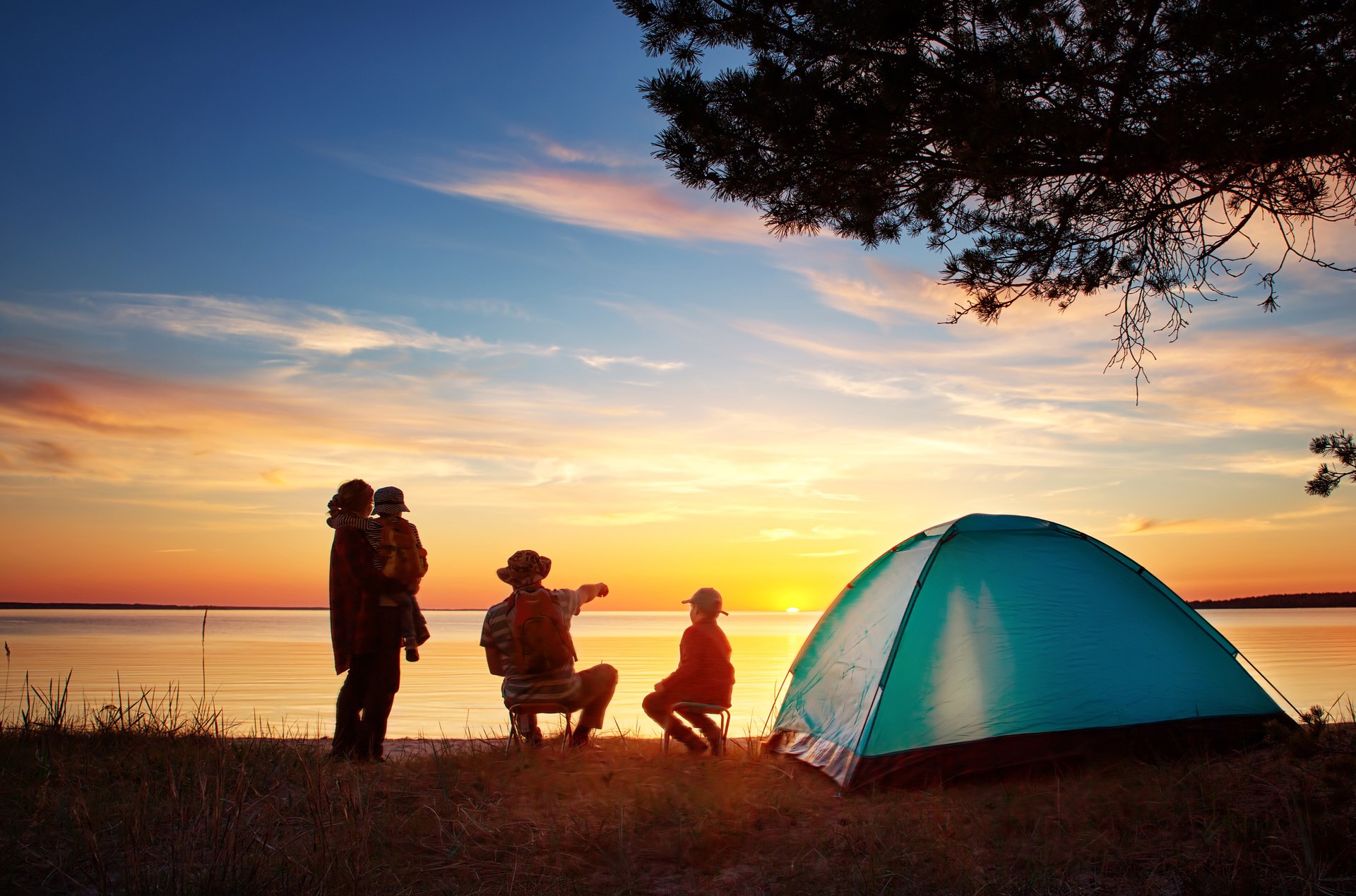
Remember, a camping adventure in the wilderness brings you closer to nature and Wild Animals, so be prepared with Safety Tips and proper precautions. Always practice fire pit safety, secure your food, and choose camping trips with nearby restrooms for convenience.
When camping, carry insect repellent and prioritize food safety. The great outdoors is waiting for your camping safety expertise. Store your food smartly, check your camping equipment, and wear your life jacket during water-based camping gear activities.
By heeding these camping safety guidelines, you’ll have a fun experience amid the health issues the wilderness can present. So, pack your bags, head outdoors, and create memories that will last a lifetime while practicing common sense and staying safe. Happy Camping!
Frequently Asked Questions
What are the essential safety precautions when camping with my family?
When camping with your family, essential safety precautions include:
- Choosing a safe campsite.
- Setting up camp properly.
- Storing food securely to prevent wildlife encounters.
- Packing a well-equipped first aid kit.
- Educating your family members about safety rules, such as fire safety and wildlife awareness.
How can I protect my family from wild animals while camping?
To protect your family from wild animals while camping, follow these guidelines:
- Store food in bear-resistant containers or hang it in a bear bag away from your campsite.
- Keep a safe distance from wildlife; never approach or feed them.
- Make noise to alert animals to your presence, especially in bear country.
- Learn about the specific wildlife in the area you plan to camp and follow any local guidelines or regulations.
What should be included in a family camping first aid kit?
A family camping first aid kit should include items like bandages, adhesive tape, antiseptic wipes, pain relievers, tweezers, scissors, a first aid manual, prescription medications (if needed), and any specific items for family members with allergies or medical conditions. Customize the kit based on your family’s unique needs.
How can I ensure our campfire is safe for family camping trips?
To ensure a safe campfire while camping with your family, follow these guidelines:
- Keep the campfire within designated fire rings or pits if provided.
- Never leave the fire unattended, and keep a close eye on children near the fire.
- Keep a bucket of water and a shovel nearby for fire control.
- Completely extinguish the fire before leaving the campsite or going to sleep.
What should we do if a family member gets injured or sick during a camping trip?
If someone in your family gets injured or sick during a camping trip, follow these steps:
- Assess the situation and administer first aid as needed.
- Call for emergency help using your communication device or locator beacon if the injury or illness is severe or life-threatening.
- Have a well-equipped first aid kit to treat minor injuries and illnesses.
- If necessary, follow your emergency evacuation plan and be prepared to provide precise location information to rescuers.
Elevate Your Family’s Well-Being with a Family Life Focus!
Are you ready to prioritize your family’s health, happiness, and harmony? Look no further than Family Life Focus! Our platform is dedicated to helping families thrive in every aspect of life. We’ve covered you, from expert advice on parenting and relationships to wellness tips and fun activities for the whole family.
Join our community of like-minded families committed to creating lasting memories and strong bonds. Explore a wealth of resources, articles, and expert insights tailored to your family’s needs. Whether you seek parenting hacks, relationship advice, or ways to boost your family’s well-being, Family Life Focus is your go-to destination.
Take advantage of the opportunity to make your family life extraordinary. Visit us at Family Life Focus today and take the first step toward a happier, healthier family life. Your family deserves the best; we’re here to help you achieve it!


